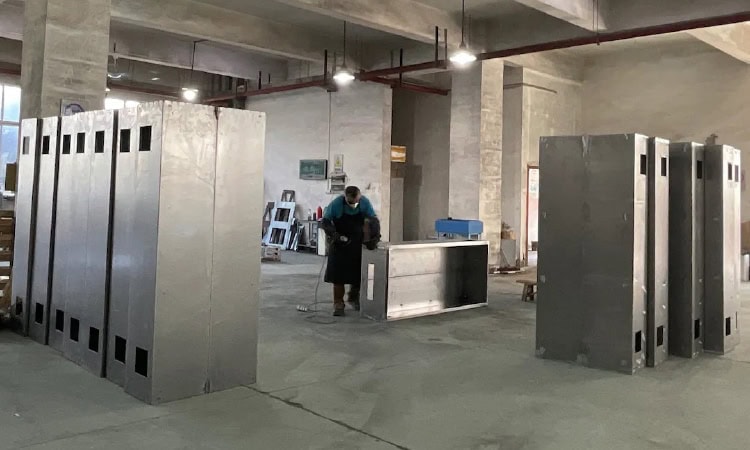Fast Track to Expedited Shipping Success

Expedited shipping helps organizations elevate their competitive edge, enhance customer satisfaction, and swiftly respond to supply chain disruptions—all while keeping inventory costs in check. Here’s how to speed expedited shipping success.
The words “expedited shipping” can sometimes prompt the notion that someone, somewhere along the supply chain, goofed. As a result, the company needs to spend more to speed a shipment along.
While expedited shipping remains an important tool for compensating for missteps, savvy organizations take a more strategic approach. For example, they might leverage expedited shipping to boost customer satisfaction and their competitive position.
About one-third of consumers say they’re more likely to do business with a company that offers same- or next-day shipping, says Dan Spitale, vice president with UPS Digital, a business unit of UPS. Companies that use expedited shipping to meet these expectations may gain an edge.
Eyes On Satisfaction

GlassesUSA.com prioritizes customer satisfaction by expediting orders. It ships most glasses within a day or two, outpacing the industry’s typical 10-day lead time.
A goal of ensuring customer satisfaction is one driver behind GlassesUSA.com’s use of expedited shipping, says Eldad Rothman, chief operating officer and co-founder of the leading online eyewear retailer. Many consumers are new to buying glasses online, and some worry that they may need to compromise on quality.
GlassesUSA.com, which produces about 4,000 orders every 10 hours, aims to shatter that misperception. “We always want to surprise customers with the physical experience,” Rothman says.
The glasses take between several minutes and several days to produce, depending on their complexity. Shipping takes no more than another one or two days. This compares to up to the 10-day lead time that has been the industry norm, he adds.
The company recently opened a logistics center in Atlanta. The site, which brings together operations previously spread across several locations, was chosen in part for its proximity to Hartsfield-Jackson Atlanta International Airport.
Typically, orders heading to the West Coast will go via expedited air shipping, so they arrive within two business days—generally, the same amount of time as shipments to customers in the southeastern United States, many of which travel via the U.S. Postal Service.
While it’s difficult to place a dollar amount on the value of expedited shipping to GlassesUSA.com, Rothman notes that customers return an average of 1.5 times per year. That compares to an average of about once every 26 months for many competitors, he says. On any given day, roughly half of GlassesUSA.com’s customers have previously purchased from the company.
Keeping Up With Demand

Alternative Roofing utilized expedited shipping to navigate supply chain disruptions in 2023, ensuring timely material delivery despite steel production delays. By sourcing from alternative suppliers and speeding up transport, the company kept projects on schedule while other roofing companies faced setbacks.
Exceeding customers’ expectations is also a goal for Michael Green, chief executive officer of Ontario-based Alternative Roofing, which specializes in metal roofing. Demand for these roofs in the Canadian market is growing about 5% annually. “To stay competitive and meet rising demand, we’ve had to improve on logistics,” Green says.
In particular, demand for the company’s services can spike during the spring and summer, given the difficulty of working during the colder winter months.
“We can often start and finish jobs quicker than our competitors, who are waiting on standard shipments,” Green says.
Moreover, given the poor reputation of some contractors, Green says his efforts to provide professional and timely service can pay off. “I rely more and more on my online reviews for future business too, so no one-star or two-star reviews aid my case,” he says. “The customer experience always matters, so it’s always worth it not to be late.”
Green has also used expedited transport to overcome occasional supply chain disruptions. During some hiccups in steel production in 2023, for instance, his company was able to source materials from alternative suppliers and get them delivered quickly. “This kept our projects on track when others were facing delays,” he says.
Lowering Inventory Costs
The tighter control typically possible with smaller expedited shipment sizes can enable companies to improve their cost structure, says Michael Ernst, chief operations officer with Expedite All, which provides expedited small truck delivery solutions. He estimates that about 70% of the expedited shipments his firm sees are planned.
Expedited shipping can help companies lower inventory expense. These expenses include not just the cost of purchasing large quantities, but also the salaries of the warehouse employees and the software needed to manage larger inventory levels. Companies also need to consider the risk of a market shift that renders inventory obsolete or irrelevant.
“Using expedited transportation has been a game changer for our business in several strategic ways,” says Tommy Mello, who founded A1 Garage Door Service in 2007. His company now brings in more than $100 million annually and operates in approximately 15 states.
“Garage doors are bulky, heavy, and require a lot of storage space, so improving supply chain efficiency has been a major priority,” Mello says, adding that by refining how it aligns supply and demand, A1 has cut inventory holding costs by 20% in certain scenarios.
Expedited transportation strategies and real-time inventory tracking help ensure A1 isn’t sitting on a surplus of garage doors that aren’t immediately needed, he adds.
Expedited shipping also helps A1 handle orders during sales events. For a garage door company, sales events might be aligned with local home shows or seasonal promotions. “While it may not be the typical holiday sale, these events still create urgency for customers to act,” Mello says. Expedited transportation enables A1 to meet customer expectations and maintain a smooth flow of products, even during the busiest times of the year.
During the pandemic, supply chain disruptions caused a few setbacks. Along with garage doors, some shipments of springs, rollers, brackets and other components were delayed.
“Missing even one component can cause a ripple effect on our entire production timeline,” Mello says, adding that a focus on expedited logistics and tight vendor relationships came into play.
“We worked closely with our suppliers to find alternatives and even adjusted our inventory strategy to keep things running smoothly, mitigating the impact as much as possible,” he adds.
Boost Competitive Positioning

Able Hardware, a key player in the metal fabrication industry, embraces expedited transportation as a strategic tool, not just in times of emergency, but also as a way to enhance its competitive edge and support growth.
Able Hardware, a key player in the metal fabrication industry, annually exports around 200 twenty-foot equivalent (TEU) containers from its operations in China and Australia to locations across the globe.
“We’ve embraced expedited transportation as a strategic tool, not just in times of emergency, but also as a way to enhance our competitive edge and support our growth,” says Jason Woo, the company’s founder.
During a peak season about two years ago, Able encountered a 20% jump in customer orders—well beyond its forecasts. To ensure the company met its commitment to customer satisfaction, Able turned to expedited shipping. It delivered orders on time, despite the spike in demand.
“Our clients valued our reliability and trustworthiness, especially during peak season when delays are common,” Woo says. Able’s dependability during this critical period strengthened its relationships with customers and ultimately boosted repeat business.
When a global steel shortage in 2020 threatened Able’s manufacturing schedule and, consequently, its ability to fill client orders, Woo expedited imports of a specialty alloy from a European supplier with which it had built a strong relationship, preventing production disruptions.
“Expedited transportation isn’t simply our contingency plan; it is an integral part of our business strategy,” he adds.
Expedited shipping can make sense in several other scenarios. One is simply the ability to move goods more quickly. Companies that provide urgently needed products, like medical supplies, or food and perishable products, likely will value speed over cost, Ernst says. Expediting may extend the period in which perishable items can be sold, helping to boost sales.
The costs incurred when manufacturing and assembly plants have to shut down due to a lack of parts are steep. Using expedited shipping to ensure they remain operating can also pay off.
Expedited shipments typically undergo less handling than non-expedited cargo. Generally, the more an item is handled, the greater the risk that it will be damaged, Ernst says. Minimizing handling often is critical for products such as finely tuned machinery or robotics, in which damage becomes expensive.
Moreover, when products vulnerable to damage aren’t expedited, companies may spend extra time and money packaging them, Ernst says. Reducing the need for additional packaging can offset some of the cost of an expedited shipment.
Trucks carrying expedited shipments generally stop less frequently than those with non-expedited cargo. Each stop can present another opportunity for loss.
“Some companies may justify expedited shipping because it’s less risky,” says Patrick Noonan, founder and partner with logistics company Map Transit.
One “slam dunk” use case for expedited shipping occurs when a company offers high-value inventory, such as electronics, and covers the cost while the goods are in transit, says Steven Carnovale, Ph.D., supply chain strategist and associate professor with Florida Atlantic University. Shortening transit time can reduce the holding costs while the goods are being shipped.
Expediting can be key when it’s critical that a shipment arrive at a specific time and at a specific place, such as before a trade show or marketing blitz. For example, companies planning for Black Friday sales might proactively expedite shipments to retailers so the products will be part of Black Friday ads, says Jason Williams, account manager with Trinity Logistics.
Sometimes the ads themselves are expedited, Williams says. The printing company may face a tight time frame between finalizing the ad and when the customer needs it, so they’ll plan from the outset to expedite.
Expediting Advances
It’s likely that expedited shipping will remain popular, given how accustomed almost everyone has become to near-instant delivery timeframes, as well as the ways in which it can be used strategically.
The tools used to expedite, however, are likely to change. For instance, some larger companies are experimenting with drone delivery. “It’s a question of when, not if,” says Darpan Seth, CEO of tech firm Nextuple.
These changes make the expedited shipping market an interesting space to be in, Ernst says. “It’s exciting, and we’ll see it grow by leaps and bounds in the coming years,” he adds.
Steps to Optimize Expediting
Follow these steps to get the most from expedited shipping.

Define the problem you’re solving. The goal should be to identify a delivery offering that fits your organization’s purpose, rather than providing expedited shipments because other companies are, says Marc Palazzolo, principal in the strategic operations practice with Kearney, a global management consultancy.
That’s especially the case if it’s not clear customers actually are looking for expedited shipping. This requires determining what customers truly want and how different solutions will impact costs and margins.
Consider the customer’s value and the product’s margin. Before expediting, calculate whether the margin on the shipment allows for spending more on transportation. Then, determine if the customer’s value to the firm is worth the additional cost.
Leverage decision engines. To gain the benefits of expedited shipping, organizations need sophisticated decision engines that can optimize delivery speed and cost, while considering multiple factors, such as the location of the company’s inventory and the carriers operating in the time frame and locations needed.
It also includes the volume of business the company does with each carrier, which helps the company determine if it can take advantage of discounts and better manage any surges in shipping
Plan for expediting. The sooner a company can let its logistics partners know of its plans to expedite, the more likely they’ll be able to access capacity.
Take stock of your network. Expediting isn’t the only way to cut transit time. Companies also want to identify their logistics providers and network nodes that are close to demand centers, and assess whether it’s possible to forward deploy inventory so it’s closer to customers.
Pay attention to details. Some shipment details may sound insignificant, but have the potential to delay the expediting process. For example, the receiving dock may need to receive expedited packages in a certain configuration. Identifying these requirements ahead of time can help ensure the expedited shipments face minimal delays.
Research expediting options. While air transport typically is quickest, cargo has to comply with various regulations. In addition to understanding these requirements, check how quickly a shipment can get onto a flight, and whether it might sit at the arrival airport before traveling to its final destination. Delays on either end extend the overall time that cargo is in transit.
Know who’s handling your freight. Before handing freight to a driver, check that their commercial driver’s license matches the information provided by the broker or logistics provider. Many issues that arise with expedited shipments are due to human error.
“The more protocols you can put in place to make sure you load with the right people and they have the proper equipment to service your freight, the better off you’ll be,” says Patrick Noonan of Map Transit.
Key Trends in Expedited Shipping
Global expedited shipping has experienced significant changes in recent years, with growing reliance on advanced technologies, increased demand for ecommerce, and supply chain disruptions due to weather, the pandemic, and other global events. As global shipping rates continue to rise and digitalization becomes a necessity, companies are leveraging data analytics, AI-powered platforms, and sustainable logistics to stay competitive.
Here are key trends to watch.
AI. The rise of artificial intelligence enables more efficient transportation operations, particularly helping shippers to optimize routes, predict costs, and improve packaging strategies.
Rising rates. The impact of rising parcel rates across all major carriers is leading shippers to look for cost-effective solutions to help optimize freight and parcel shipping operations.
Sustainability. Businesses are increasingly committed to reducing their environmental footprint, even though it can mean higher transportation and logistics costs.
